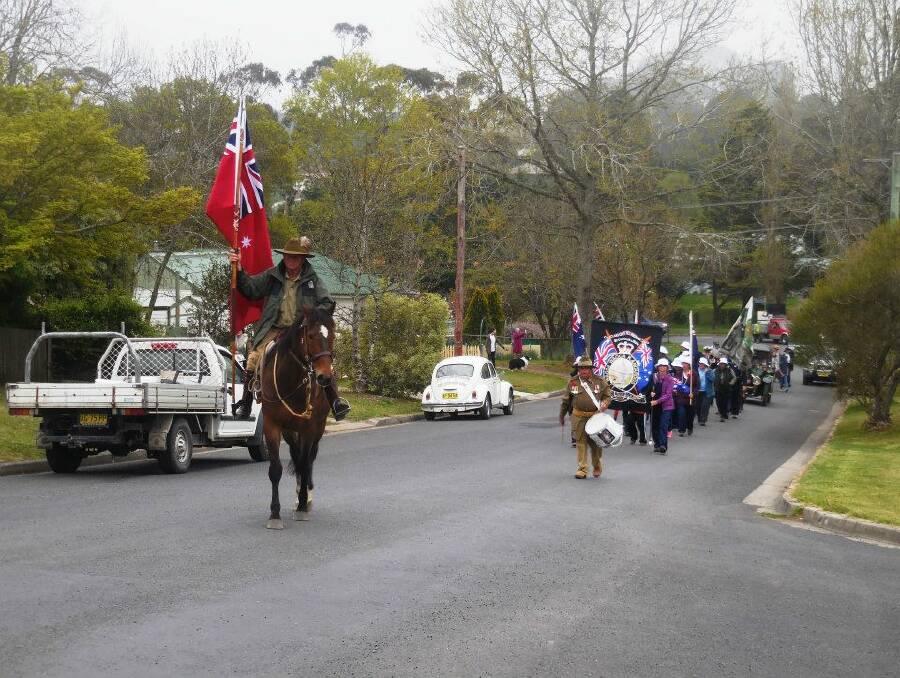
THE 35-day Kangaroo March re-enactment is nearing the end, with only a few days until the 524km trek from Wagga reaches its destination at Campbelltown.
Subscribe now for unlimited access.
$0/
(min cost $0)
or signup to continue reading
Publicity for the re-enactment has been boosted by national airing of parts of a speech delivered by march patron, Dr Brendan Nelson, on the first day of the march in Wagga on September 5.
“It was a very powerful speech,” said Rhondda Vanzella, vice-president of the Kangaroo March Centenary Re-enactment Association.
“Many people were blown away by it.”
The Kangaroo March re-enactment is still in the Southern Highlands where marchers have been hosted by the Goulburn, Marulan, Wingello, Bundanoon, Exeter, Moss Vale and Mittagong communities since September 26.
The group walked from Moss Vale to Mittagong on Monday and will cover another 15km to Hilltop on Tuesday and 20km to Thirlmere on Wednesday.
The march will end at Campbelltown on October 9.
The Kangaroo March re-enactment celebrates a march from Wagga to Sydney to raise volunteers for service in World War I.
The original march started in Wagga on December 1, 1915, with 88 enlistees and ended in Sydney with more than 220 recruits.
At the time, the country was desperate for volunteers, with the Australian Imperial Force having suffered more than 23,000 casualties, including more than 4500 dead, in less than eight months of fighting at Gallipoli. The march was one of several that started in country areas at the time, and was the longest in distance.
The 2015 marchers include descendants of original Kangaroos and volunteers.
Some of the re-enactment marchers will have walked the whole distance by the time the event reaches Campbelltown.
“Some of the marchers are saying they can’t believe its less than a week to go,” Mrs Vanzella said.
Mrs Vanzella said at times there were up to 150 people on the march.
She said two of the outstanding characteristics of the trek had been friendship and hospitality.
“We have had to buy only three meals since leaving Wagga,” Mrs Vanzella said.
Mrs Vanzella said even small towns had embraced the spirit of the march.
“When we came into Exter there were poppies everywhere,” Mrs Vanzella said of the flower that symbolises World War I.

